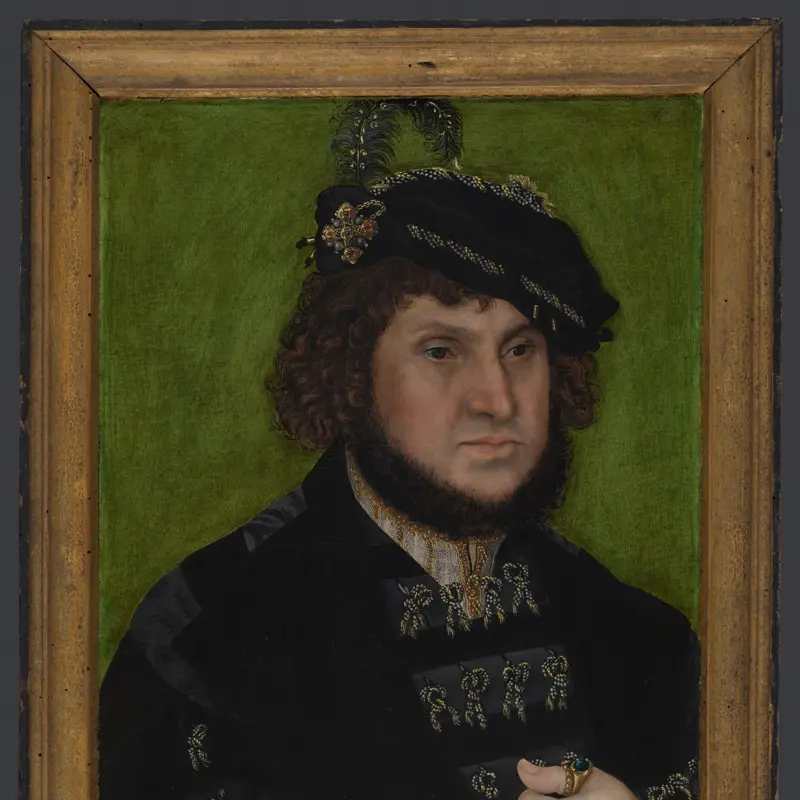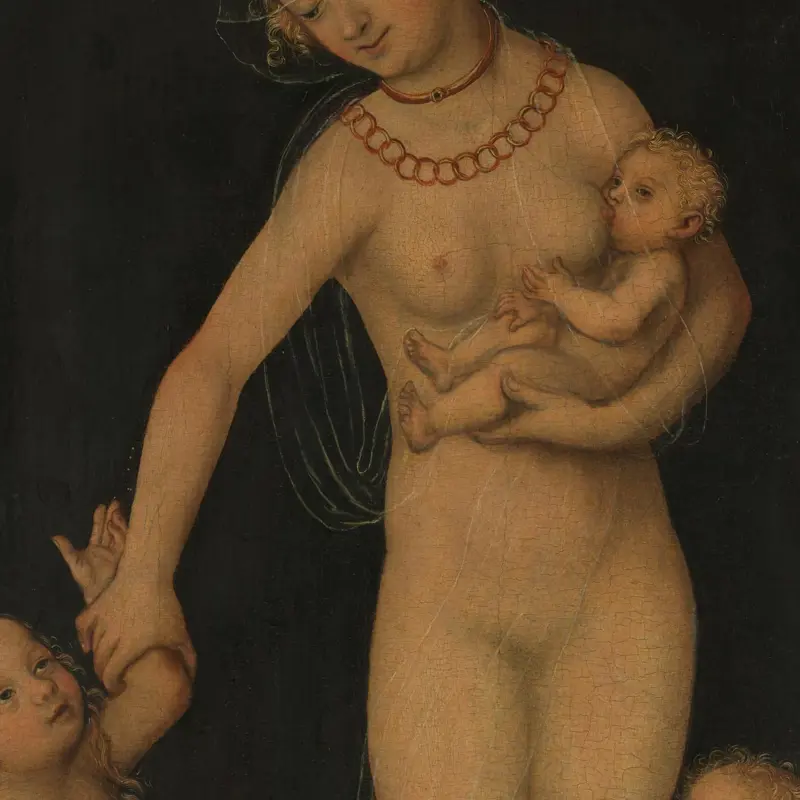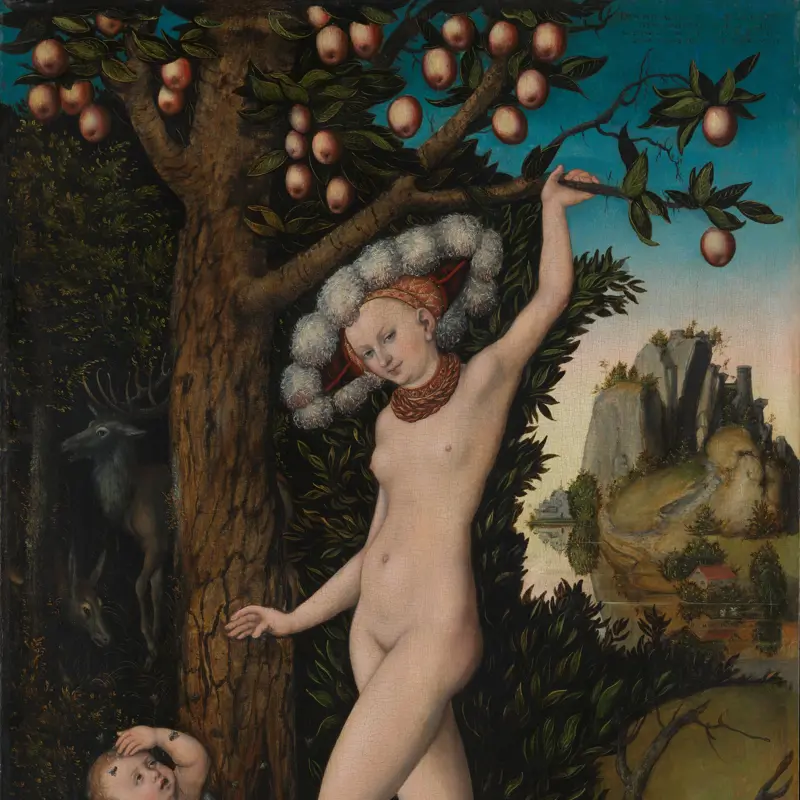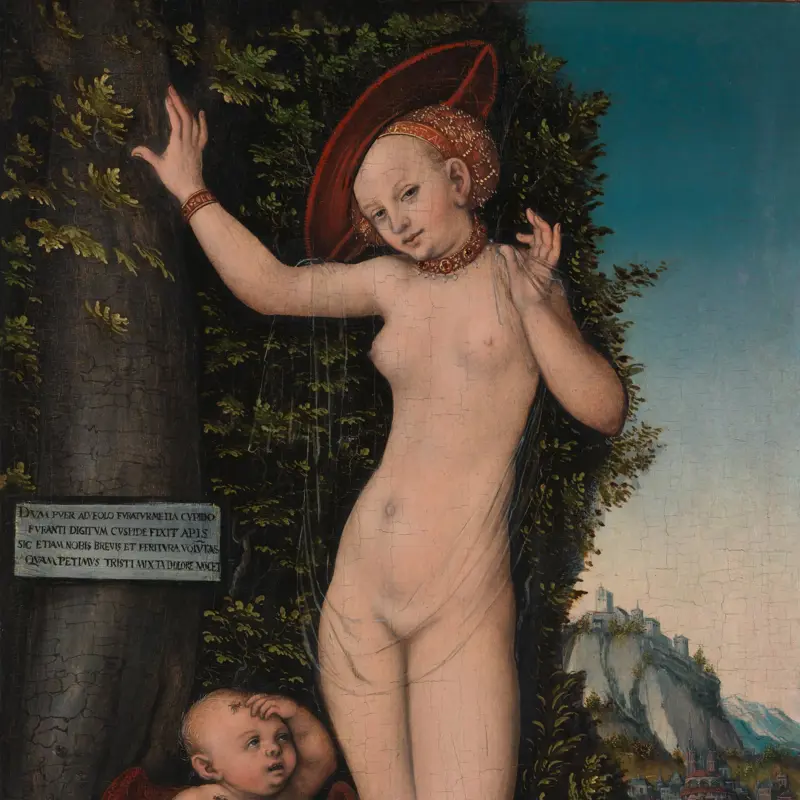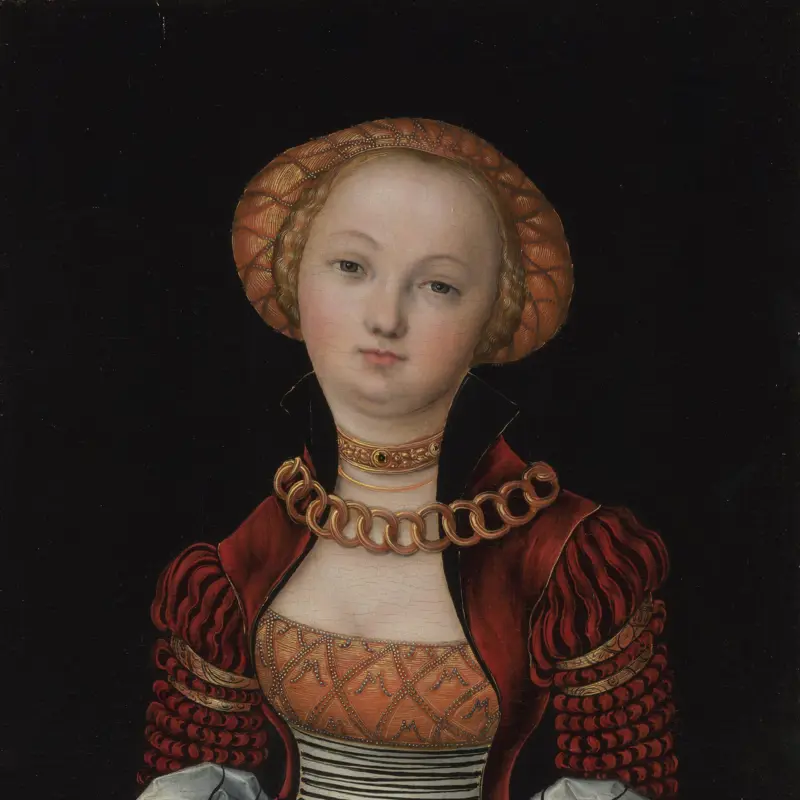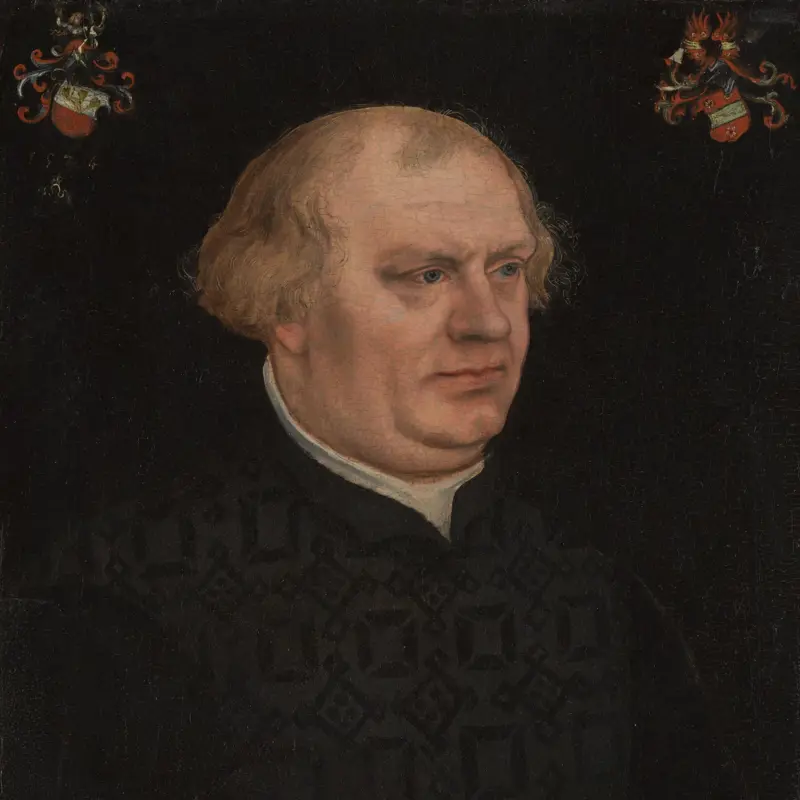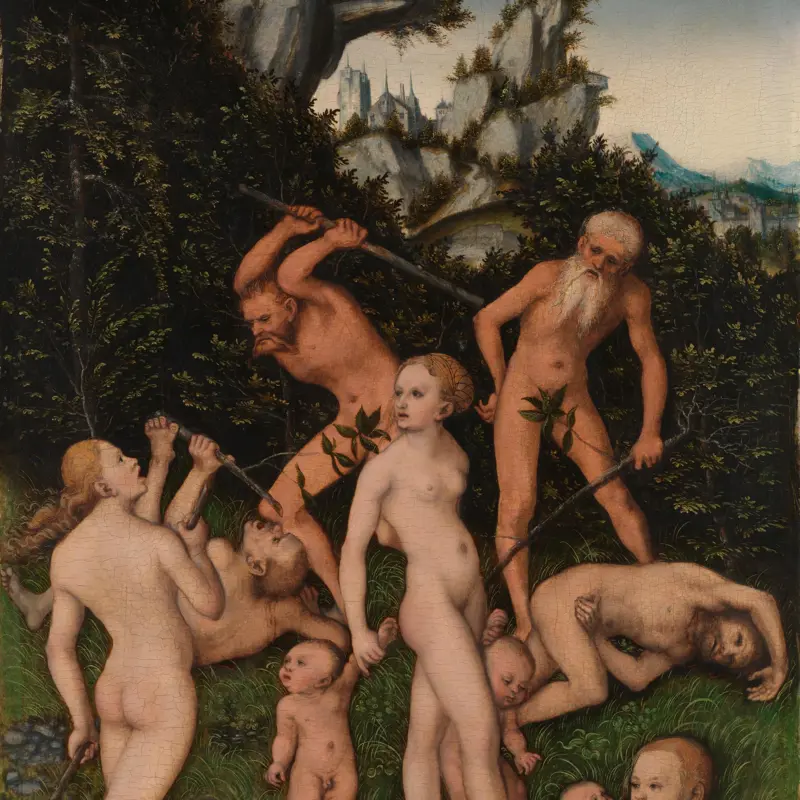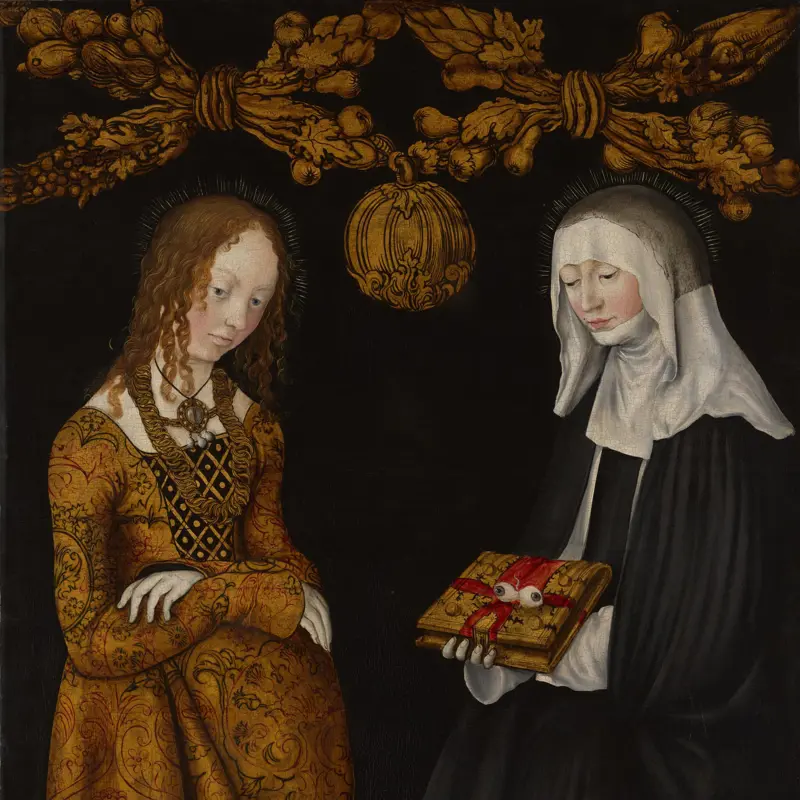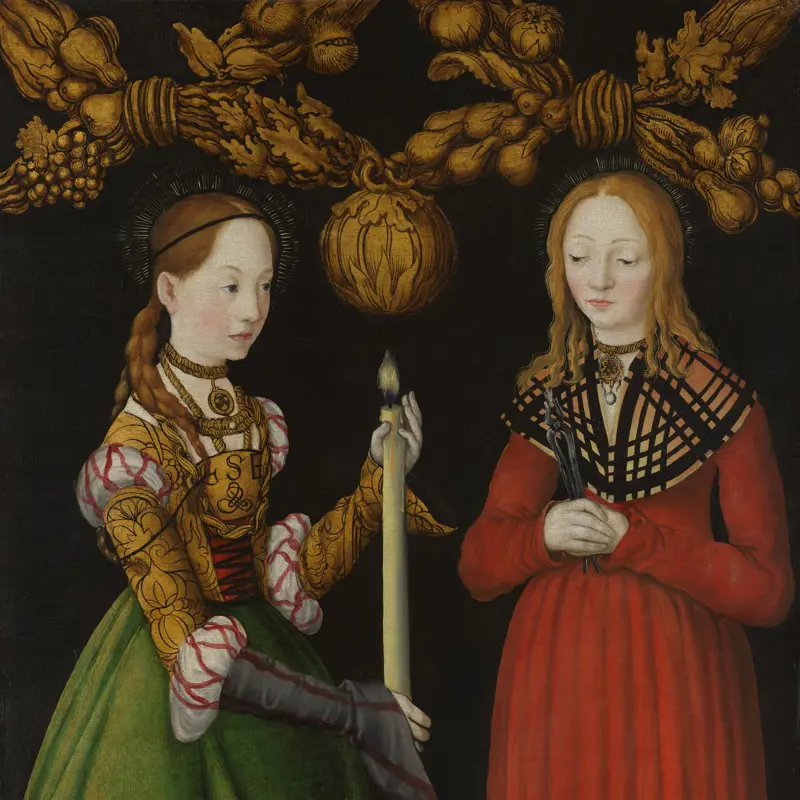Lucas Cranach the Elder, 'Diptych: Two Electors of Saxony', 1509
About the group
Overview
These joined portraits depict two future electors of Saxony, Johann the Steadfast and his son, Johann Friedrich the Magnanimous – Cranach worked as court painter to successive electors from 1505 until his death in 1553. The coats of arms on the back of the right panel help to confirm their identities.
The portraits have complementary colour schemes: the green of the background in the father’s portrait is echoed by the green of his son’s clothing, while the black background in the son’s portrait matches his father’s clothing. Johann Friedrich dominates more of the composition than his father and he faces towards the viewer, even though the convention was to place each sitter at a three-quarter turn toward the other.
The frame is original: paint has been detected on the inner edges of the frame, which suggests that the paintings were made after the wooden panels had been fitted into it.
Key facts
Details
- Full title
- Diptych: Two Electors of Saxony
- Artist
- Lucas Cranach the Elder
- Artist dates
- 1472 - 1553
- Date made
- 1509
- Inventory number
- NG6538-NG6539
- Collection
- Main Collection
About this record
If you know more about this work or have spotted an error, please contact us. Please note that exhibition histories are listed from 2009 onwards. Bibliographies may not be complete; more comprehensive information is available in the National Gallery Library.
Works in the group
-
Johann the Steadfast, Elector of Saxony from 1525 to 1532, would have been about 38 when this portrait was made. He wears a sumptuous black hat and coat, both decorated with gold thread and seed pearls.This panel is part of a diptych (a painting made of two parts) – the conjoining panel depicts J...
-
This painting makes up the right panel of a portrait diptych (a painting made of two parts) that depicts two future electors of Saxony, Johann the Steadfast and his son, Johann Friedrich the Magnanimous.Johann Friedrich was six years old when this portrait was made. Against convention, he was por...

